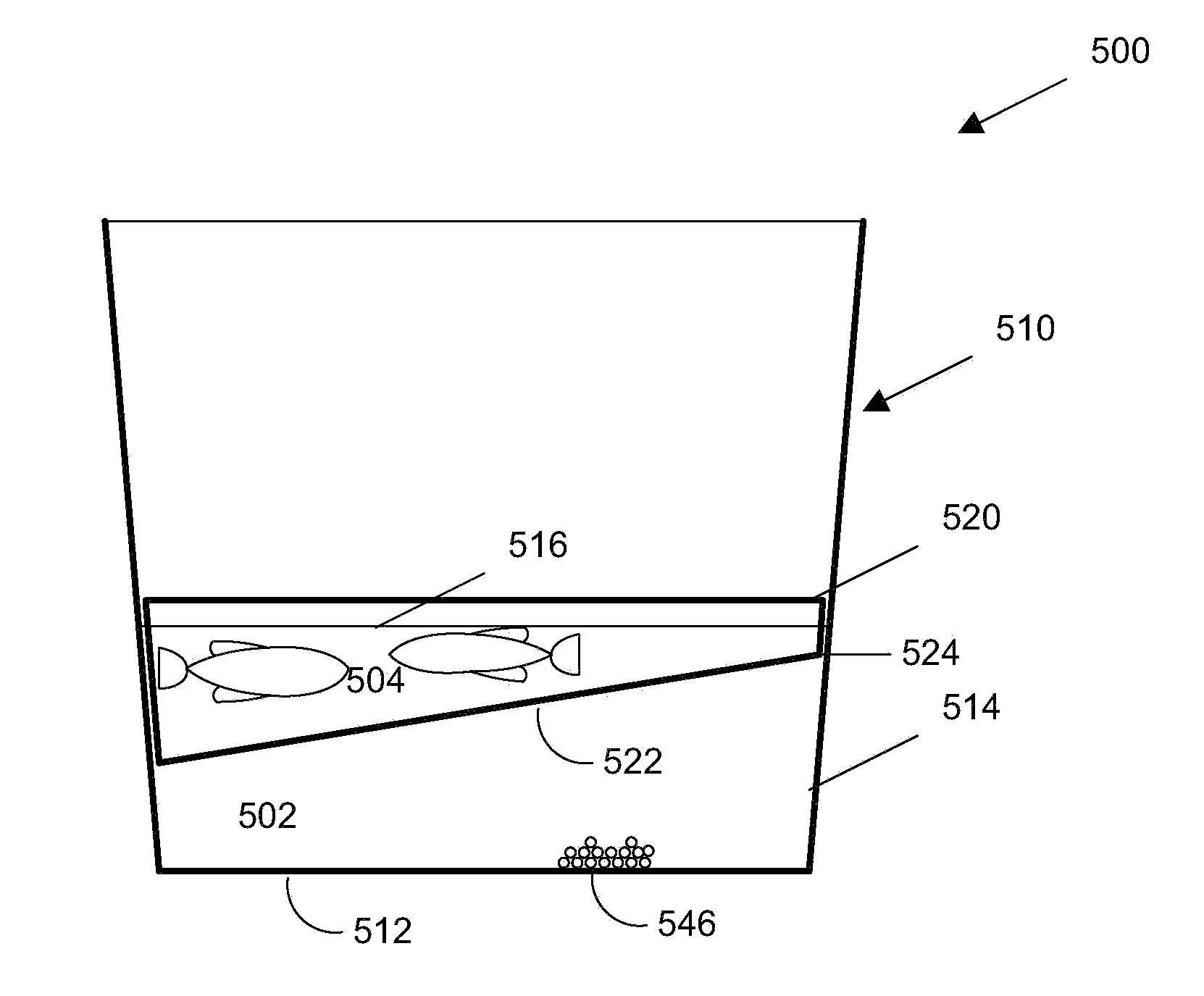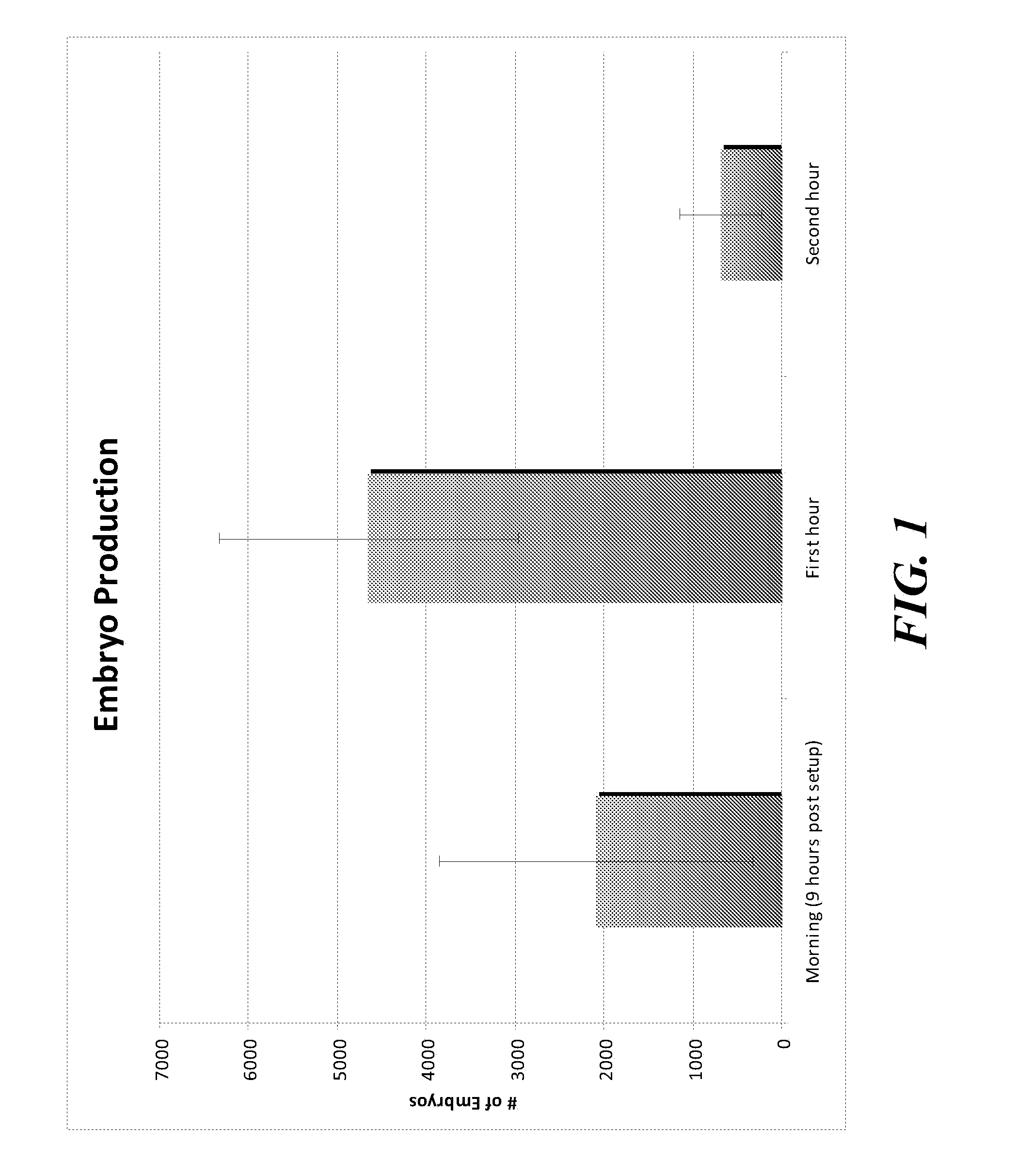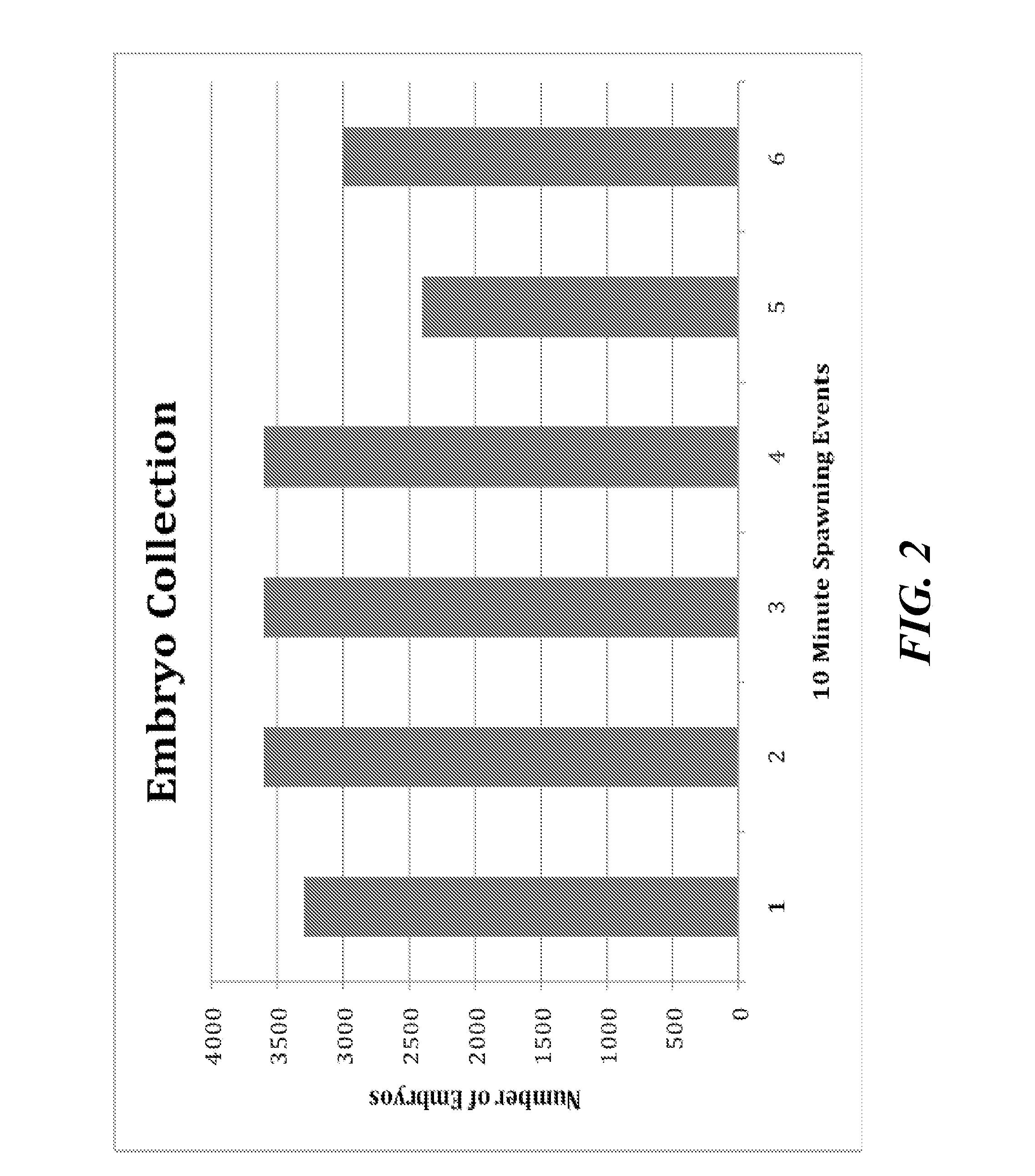Method and System for Mass Production of Fish Embryos
a technology of fish embryos and mass production, which is applied in pisciculture, aquaria, climate change adaptation, etc., can solve the problems of limited improvements on this basic approach, equipment typically used to collect newly spawned zebrafish embryos in the laboratory, and high labor intensity, so as to achieve rapid external development, reduce labor intensity, and reduce labor intensity
- Summary
- Abstract
- Description
- Claims
- Application Information
AI Technical Summary
Benefits of technology
Problems solved by technology
Method used
Image
Examples
example 1
Assessing an Embodiment of the Kit and Method
General Materials and Methods for Example 1.
[0119]In accordance with one embodiment, the spawning platform can be constructed by cutting a section from a 5-gallon bucket. The first cut was made 1 inch above the bottom of the bucket to remove the bucket floor. A second cut was made approximately 4 inches above the first cut leaving a plastic band (4″ highט12″ diameter). A ⅛″ plastic mesh was then glued to the inside bottom of the plastic band with a slightly undulating topography, see FIGS. 4 and 5A-5C.
[0120]In accordance with one embodiment of the invention, the male / female separator can be constructed by cutting another section of a 5-gallon bucket to make an additional plastic band (2″ highט12″ diameter). A ⅛″ mesh was glued flush to the top and bottom of the band creating a double-layered separator. A handle can be made by looping two zip-ties at opposite ends to the plastic band or using wires as shown in FIG. 5A.
[0121]The breeding ...
experiment 1
Results for
[0125]FIG. 1 shows the results of Example 1. Mean embryo collection nine hours post setup was 2092±1759. In the first hour within the spawning water profile, mean embryo collection was 4650±1690. Embryo collection the following hour (collection after second hour) consistently declined to a mean of 688±463.
example 2
Assessing an Embodiment of the Kit and Method for the First Ten Minutes within the Spawning Water Profile
Materials and Methods for Example 2.
[0126]The General Materials and Methods for Example 1 were utilized. Further, embryos were collected from a spawning group after a 10-minute interval, for six separate spawning events (10 males / 30 females per event).
Results for Example 2.
[0127]Mean yield was 3250±480 embryos, with a maximum clutch size of 3600 embryos. Collection after the initial 10 minutes declined as was seen in Experiment 1, but results were not recorded. The results for Example 2 are illustrated in FIG. 2.
Example 3
Zebrafish Exhibit Embryo Production in the Priming Water Profile without a Separator, but Still Spawn when Introduced into a Spawning Water Profile
PUM
 Login to View More
Login to View More Abstract
Description
Claims
Application Information
 Login to View More
Login to View More - R&D
- Intellectual Property
- Life Sciences
- Materials
- Tech Scout
- Unparalleled Data Quality
- Higher Quality Content
- 60% Fewer Hallucinations
Browse by: Latest US Patents, China's latest patents, Technical Efficacy Thesaurus, Application Domain, Technology Topic, Popular Technical Reports.
© 2025 PatSnap. All rights reserved.Legal|Privacy policy|Modern Slavery Act Transparency Statement|Sitemap|About US| Contact US: help@patsnap.com



